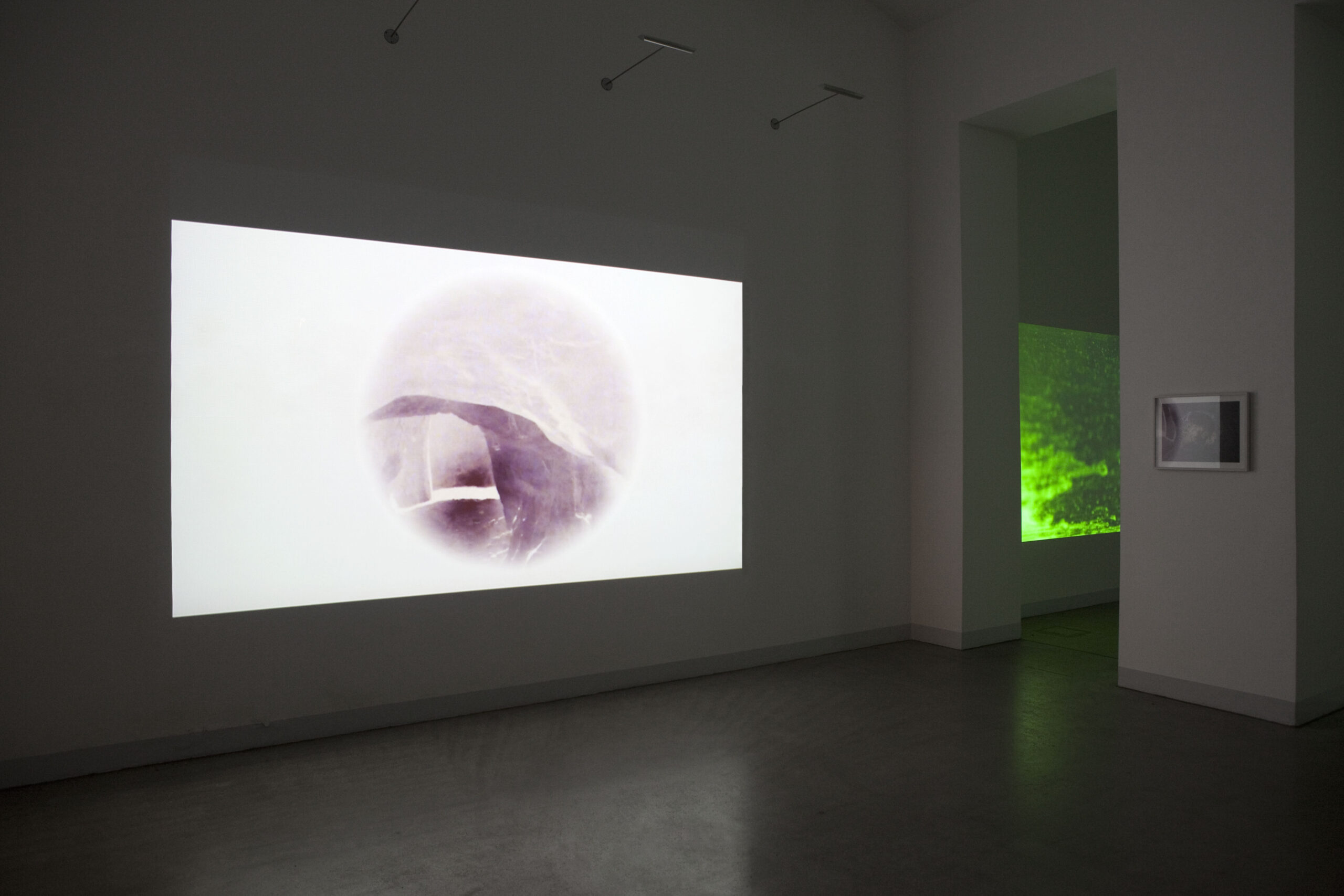PASSAGEN
In »Passagen« (or »Passages« from 2009 – 2011), Edgar Lissel continues a process that served as the visual basis for the series »Sphaera Incognita« (2006-2008), shifting it effectively to an exploration of ‘spaces within’. While his main focus up until this point had been an investigation of spatial phenomena from the perspective of natural sciences, visual studies, and cultural history, the ‘inner spaces’ of the psyche began to reveal themselves during the course of Edgar Lissel’s most recent work. He began by looking into the wealth of images of the Mithras Cult of antiquity, whose roots can be traced as far back as the 14th Century BCE. The initial inspiration for Edgar Lissel stemmed from contemporary theories about the mystery cult, that interpret the cult image less as the representation of exterior phenomena as a cosmological projection, and that instead understand and perceive the cult image as the expression of psychic manifestations in the unfolding of human perceptivity and the associated expansion of emotional and mental space.
These theories correspond to the field of natal studies that suggests that prenatal experiences and memories, the birthing process and the first months after birth inscribe themselves as “existential tattoos” onto our subconscious. In the next phase, called the “optical opening”, during which the newborn begins to optically perceive its environment and its vision begins to improve, an unconscious creative process begins, one in which interior and exterior images encounter each other and begin to merge. The experiences from this process are formative for creative image production and perception.
From this fascination, image after image of »Passages« were created. These show a combination of cognitive and meditative processes in the recognition and perception of potential relationships and dependencies of ancient-archaic imagery, the subconscious and the recognition of images. These »Passages« successfully circumvent the strict separation between the interior and the exterior, mythos and logos, body and soul. The visualization of this creative process invites the spectator to actively participate in seeing and demands lively contact with the image, one that can even evoke personal inner images from the subconscious and that creates a sphere of individual and collective experience through such a resonant encounter. Through these »Passages«, we are confronted with the attempt to bring the artistic object into lively exchange with the viewing subject and to remind us that the world not only lies in front of us, but mysteriously within us, connecting us to a constant creative metamorphosing process.
The cycle »Passagen« includes photographs and several “filmographs”, each about three minutes long, that trace the various transitions of human development. One of these film-like image sequences shows the passage through a subterranean stable (Erdstall), a man-made hollow in the earth with mystical connotations almost forcibly evoking the association and a body memory of the elementary experience of passing through the birth canal. In yet another filmograph, the represented human figure appears to become one with the elements flowing around it. The spiritual as well as bodily permeation and fusion of the exterior and the interior become one entity reminiscent of the early childhood experience of totality, one in which we once considered ourselves one with the surrounding world.
In the photographs, inscribed traces are transformed into images. The details of a male or female face of an ancient sculpture tempt the viewer to want to touch the image. The grooves and texture on the stone’s surfaces appear to be like reflections of the traces within our own soul. Out of the petrified undulating traces of waves and water of thousands of years ago rush the memories of a prenatal element from which we all originate and one that puts us in motion.
Claudia Weinzierl
